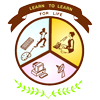Activities
CO-CURRICULAR ACTIVITIES
Teaching is made pleasant with various child centered activities : Multimedia for lower classes, Smart Class System for all classes and Computer Education from class I. We have different clubs, assembly programmes, study trips, project work and cultural programmes. Junior Red Cross, Scouts and Guides and Band for students of classes VI to IX. Every activity in the school has value education as its integral part
Abacus
* Std. I to Std. VII
Abacus learning at a very young age is useful in activating the brain of kids. When a child works on abacus, it uses both hands to move the beads. This stimulates the functioning of the whole brain and helps in adding intellect, thereby bringing out the Maths Prodigy in children
In order to ensure an all-around development of the students personality and skills the school provides ample opportunities foe the students to engage themselves in a variety of co-curricular activities like:
OUTDOOR ACTIVITIES
1. Karate
2.Band
3.Yoga
Karate
The child will begin his or her first class in a white belt, he/she, will learn that with practice and discipline comes a yellow belt and additional practice leads up to a green belt. The young karateka will continuously strive under their instructors guidance to set sights on the next level to achieve
Often mistaken as purely a fighting sport, Karate’s true purpose is self – defense, not aggression. Your child will learn the basics of how to protect him or herself, a skill that will be valuable throughout life
Band
Everyone loves music but have different ways to enjoy it. Some kids actually play an instrument or compose music. This allows them to be a step closer to music.
Playing an instrument makes one use both sides of the brain. which strengthens memory power. The School, which has an organized band of instrument players, provides the budding prodigies, a chance to pick and learn, playing instruments, of their choice
Yoga
Children derive enormous benefits from yoga. Physically, it enhances their flexibility, strength, coordination, and body awareness.
Yoga at an early age encourages self esteem and body awareness with a physical activity that’s noncompetitive. Doing yoga, children exercise, play, connect more deeply with the inner self, and develop an intimate relationship with the natural world that surrounds them.
INDOOR ACTIVITIES
1. Chess
2. Classical Dance
3. Western Dance
Chess
It promotes skills that can be applied to a huge variety of real – life situations. Moreover, the rules are easy to learn and chess can be played nearly everywhere. Not only can chess be great fun but it can also be extremely beneficial to children. When they are young and see adults playing chess, they are curious to learn more about the game of kings and queens. The child need not have study the game exhaustively t reap the benefits, like they do for a test in school. Kids simply play a game of chess and have fun.
We understand the importance of co-curricular activities for all children and it is our aim to promote this. We provide a safe environment within which young children can blossom, and grow, practicing important life skills and becoming confident risk takers.
Classical Dance
The study of dance and movement can help a child develop an understanding of their own body language as well as others. Whilst it is relatively simple to express without words straightforward emotions such as ‘happy’ and ‘sad’, the study of dance can teach a child how to express physically more complex emotions and how to read and react when someone else is physically emoting. It is vital in a child’s personal development that they learn the importance of trial and error and that. if at
first you don’t succeed, try and try again.
The exercise of repetition and rehearsal when dancing improves and mental dexterity. Learning body movement and gestures helps children absorb ideas better and improves their ability to absorb an hold information.
Western Dance
Dancing encourages children to experiment and find different paths to solving problems. The sense of success and accomplishment they will experience when they have mastered a complicated movement will encourage them to transfer this ambition in to other aspect of life.
Free style is a way of dancing in which the dancer improvises his/her moves on the spot, as he/she dances, instead of having them planned beforehand.

